The Definitive Guide to Kitchen Sink Types: An In-Depth Analysis
The kitchen sink is more than a utilitarian fixture; it’s a cornerstone of your kitchen’s functionality and aesthetic. This guide offers a look at the various kitchen sink types, dissecting their pros, cons, and unique features. And remember, at Stone Central, we help you select and install whichever kitchen sink types you choose.
Table of Contents for Kitchen Sink Types
1. Top-Mount Sinks
2. Undermount Sinks
3. Double Basin Sinks
4. Single Basin Sinks
5. Farmhouse Sinks
6. Drainboard Sinks
7. Low Divider Sinks
8. Island and Prep Sinks
9. Integrated Sinks
10. Corner Sinks
11. FAQs
—
Top-Mount Sinks
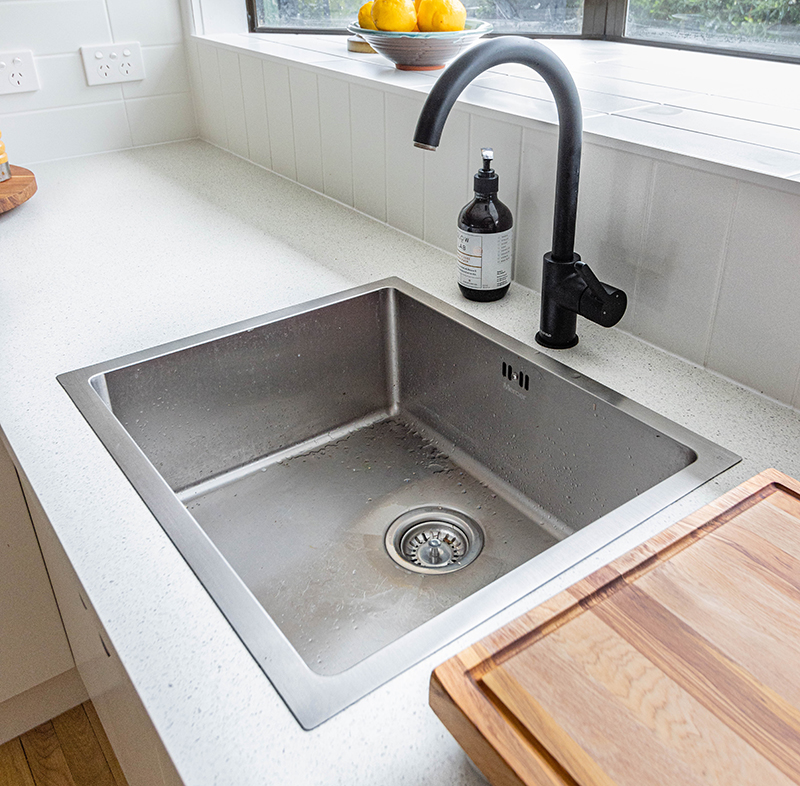
Also known as drop-in or self-rimming sinks, top-mount sinks are the most common type you’ll encounter.
PROS
Ease of Installation: Ideal for DIY enthusiasts, the installation involves cutting a hole in the countertop based on a template and dropping the sink in from above.
Cost-Effective: Generally, top-mount sinks are budget-friendly, making them a popular choice for kitchen remodels on a tight budget.
CONS
Cleaning Challenges: The sink’s rim obstructs the direct sweeping of water and debris from the counter into the sink, requiring additional cleaning effort.
Aesthetic Limitations: The visible rim may not align with modern or minimalist kitchen designs.
UNIQUE FEATURES
Material Versatility: Available in a wide range of materials, including stainless steel, porcelain, and composite materials.
Rim Variations: Some models offer decorative rims, adding a touch of flair to an otherwise simple design.
Undermount Sinks
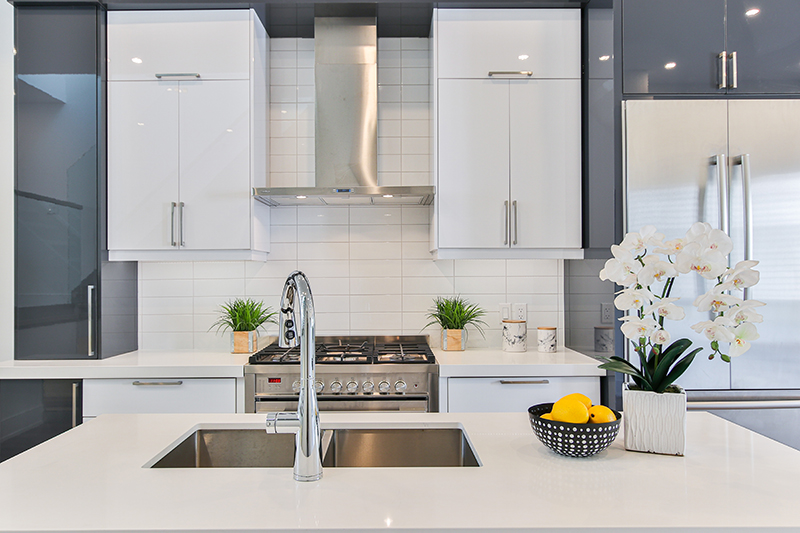
These sinks are installed beneath the countertop, offering a sleek and seamless look.
PROS
Sleek Design: The absence of a rim allows for a smooth transition between the countertop and sink, enhancing the kitchen’s overall aesthetic.
Ease of Cleaning: The design allows you to sweep countertop debris directly into the sink, making cleanup a breeze.
CONS
Cost: These sinks are generally more expensive, both in terms of the sink itself and the installation.
Installation Complexity: Professional installation is often recommended to ensure the sink is securely attached to the countertop.
UNIQUE FEATURES
Material Choices: Commonly made from materials like stainless steel, granite composite, and copper.
Clip Attachments: Special clips and adhesives are used to secure the sink to the countertop, ensuring a sturdy fit.
Double Basin Sinks
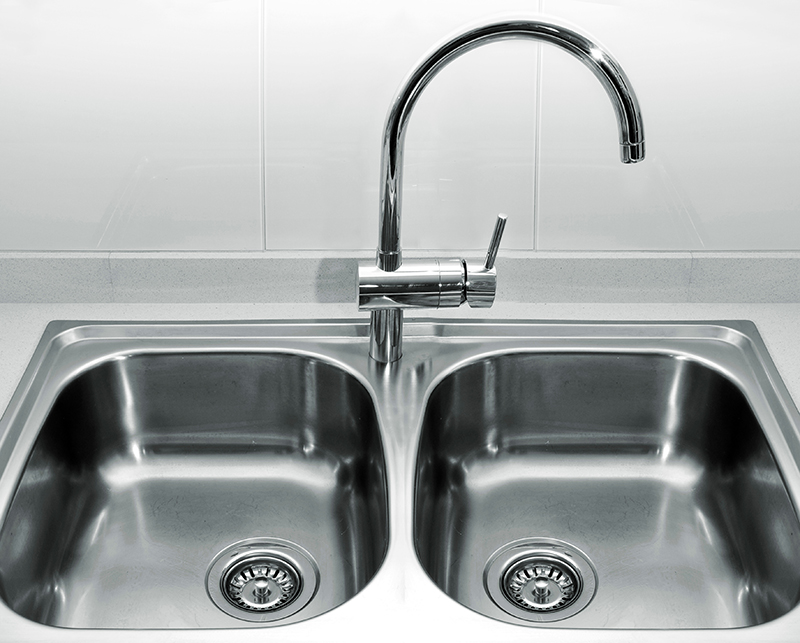
These sinks feature two basins separated by a divider, offering versatility in kitchen tasks.
PROS
Versatility: One basin can be used for washing while the other is used for rinsing or draining, streamlining your dishwashing process.
Convenience: Particularly useful in households without dishwashers, as it allows for a more organized approach to dishwashing.
CONS
Size Limitations: The individual basins may be too small to accommodate large pots and pans.
Aesthetic Concerns: The divided design may not suit all kitchen styles, particularly modern or minimalist themes.
UNIQUE FEATURES
Basin Depth Variations: Some models offer basins of different depths, allowing for more flexibility in usage.
Faucet Options: Double basin sinks often come with multiple faucet holes, providing options for additional features like sprayers or soap dispensers.
Single Basin Sinks
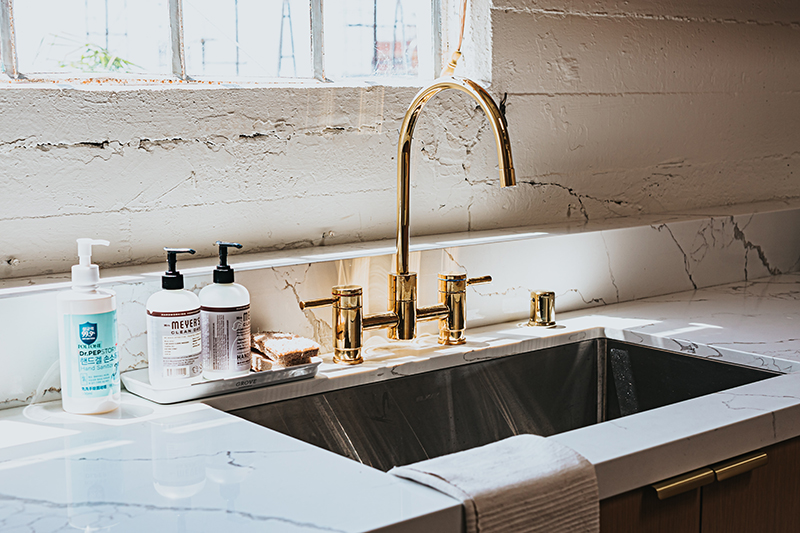
These sinks feature a single, large basin, offering a simplistic yet functional design.
PROS
Large Capacity: The expansive basin is ideal for washing large pots, pans, and baking sheets.
Simplicity: The single basin offers a clean, minimalist aesthetic that complements modern kitchen designs.
CONS
Lack of Versatility: With only one basin, there’s no separate area for rinsing or drying, which may complicate the dishwashing process.
Limited Popularity: Less commonly chosen due to its single basin, which may not suit all cooking and cleaning needs.
UNIQUE FEATURES
Material Options: Available in a variety of materials, including fireclay, cast iron, and stainless steel.
Apron Variants: Single basin sinks can also come in farmhouse or apron styles, offering a rustic aesthetic.
Farmhouse Sinks
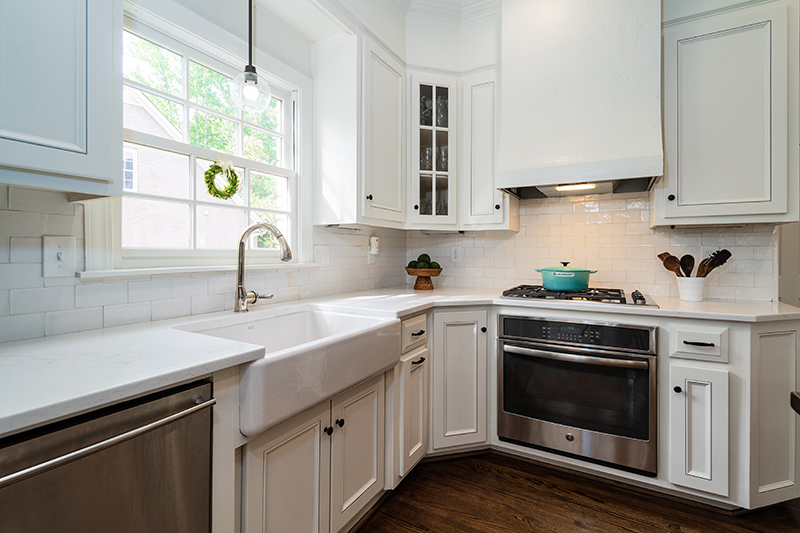
Also known as apron sinks, these are characterized by a forward-facing section that replaces a portion of the countertop.
PROS
Spacious Design: The large, single basin allows for easy washing of oversized kitchenware.
Aesthetic Appeal: The exposed front section adds a rustic charm, making it a focal point in the kitchen.
CONS
Cost: These sinks are generally more expensive due to their size and the complexity of installation.
Potential for Dripping: The design may lead to water spills on the floor if not used carefully.
UNIQUE FEATURES
Material Diversity: Commonly made from fireclay, copper, or stainless steel.
Installation Styles: Can be installed flush with the countertop or protruding slightly for a more traditional look.
Drainboard Sinks
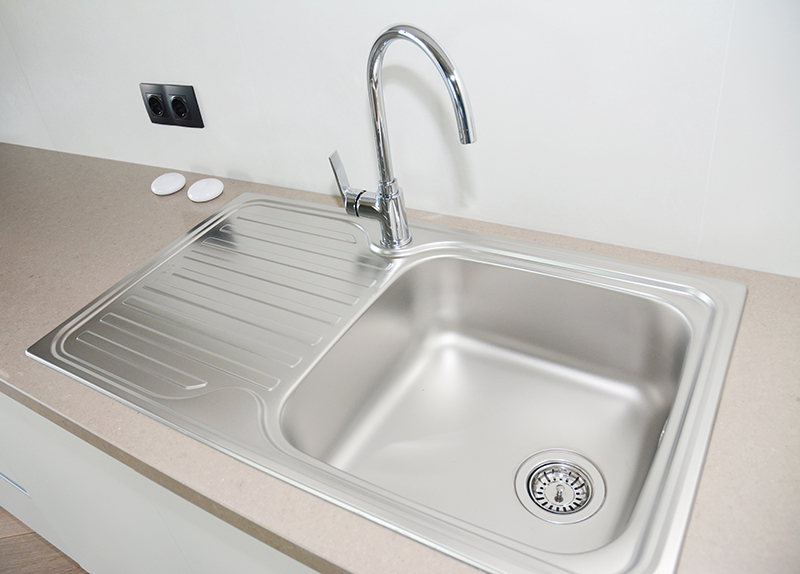
These sinks feature a built-in drainboard alongside the basin, offering added functionality.
PROS
Space-Efficient: Ideal for small kitchens or apartments where counter space is limited.
Built-In Drainboard: The integrated drainboard offers a convenient space for drying dishes or prepping vegetables.
CONS
Small Basin: The basin is often smaller to accommodate the drainboard, limiting the sink’s versatility.
Limited Usefulness: If you primarily use a dishwasher, the drainboard may go unused.
UNIQUE FEATURES
Material Choices: Often made from stainless steel for easy cleaning and durability.
Lip Design: The drainboard usually features a lip to channel water back into the sink, preventing countertop spills.
Low Divider Sinks

These sinks offer a lower divider between the two basins, providing a hybrid between single and double basin sinks.
PROS
Hybrid Design: The low divider allows the sink to function as either a single or double basin, depending on your needs.
Versatility: Ideal for washing large pots while still offering the convenience of a double basin.
CONS
Cost: These sinks are generally more expensive due to their specialized design and limited availability.
Limited Size: While versatile, the design may still limit the size of items that can be comfortably washed.
UNIQUE FEATURES
Overflow Mechanism: Some models offer an overflow feature, allowing water to flow from one basin to the other when filled to a certain level.
Material Options: Commonly made from materials like stainless steel and granite composite for durability.
Island and Prep Sinks
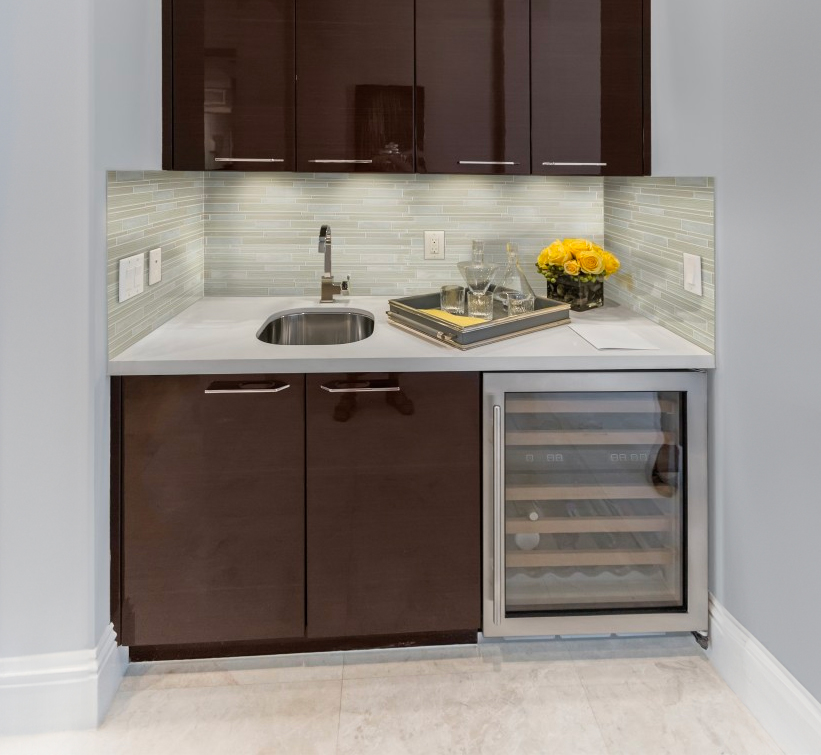
These are secondary sinks placed on a kitchen island or another counter, offering additional workspace. Sink types like these are usually for bigger budgets as they are “nice to haves” instead of being considered “necessary”.
PROS
Additional Workspace: Ideal for large kitchens or those who entertain frequently, providing extra space for food prep or bartending. Perfect for large holiday meals and frequent family gatherings.
Convenience: Allows multiple people to work in the kitchen simultaneously without getting in each other’s way.
CONS
Space Requirement: Takes up valuable counter space, which may not be ideal for smaller kitchens.
Potential Underuse: If not thoughtfully integrated into your kitchen routine, these sinks may go underutilized.
UNIQUE FEATURES
Compact Design: Usually smaller than primary sinks, making them ideal for specific tasks like rinsing vegetables or filling pots.
Faucet Flexibility: Often compatible with high-arc or pull-down faucets for added convenience.
Integrated Sinks
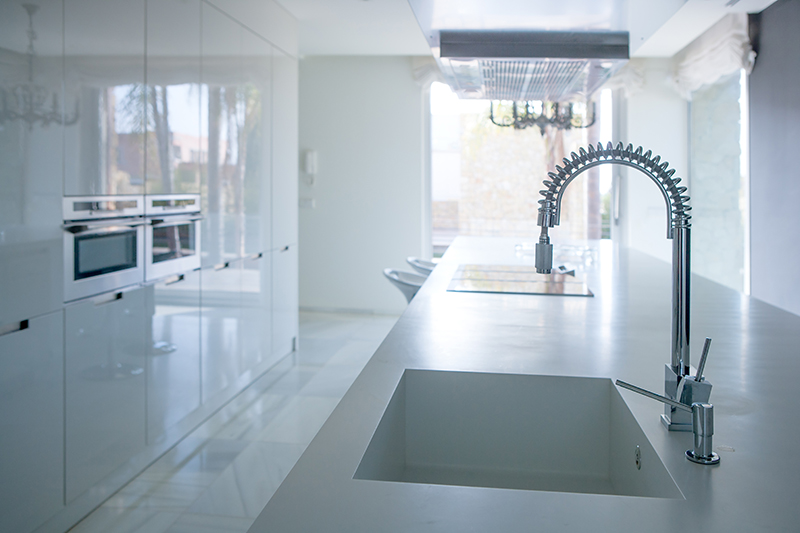
These sinks are made from the same material as the countertop, offering a seamless look.
PROS
Seamless Design: The sink and countertop appear as one continuous surface, enhancing the kitchen’s aesthetic.
Ease of Cleaning: The absence of seams eliminates areas where debris and mold can accumulate.
CONS
Cost: These are custom-made items and are generally more expensive.
Irreplaceable: If the sink gets damaged, the entire unit, including the countertop, may need to be replaced.
UNIQUE FEATURES
Material Uniformity: Usually made from solid surface materials like Corian.
Customization: Offers a high level of customization in terms of size, shape, and features.
Corner Sinks
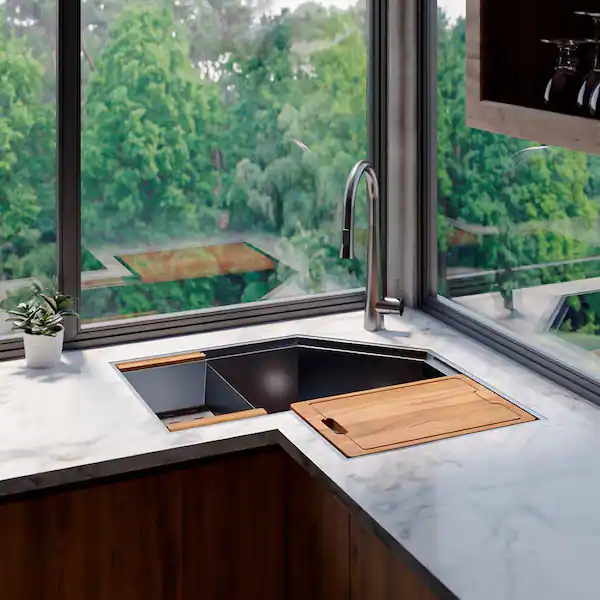
Placing them in a corner, these sinks typically feature two basins set at a right angle to each other. There are also custom options, such as these, that have one large basin.
PROS
Space Utilization: Makes efficient use of corner spaces, which are often underutilized.
Unique Design: Offers a different aesthetic and can be a conversation starter.
CONS
Cost: These sinks are often more expensive due to the custom cuts required for installation.
Structural Concerns: The design may require additional support, potentially affecting the structural integrity of the countertop.
UNIQUE FEATURES
Angled Design: The basins are set at a right angle, offering a unique layout.
Faucet Placement: Faucets can be placed in various positions, offering flexibility in design and functionality.
Kitchen Sink Types: FAQs
The choices of sink types are many, and making a selection can be challenging.
Which type of kitchen sink is the best? : Your choice will depend on various factors, including your countertop material, aesthetic preferences, budget, and specific kitchen needs. Come talk to us about your space, and how your family uses it and we’ll help you decide. And, we’ll wrap it into the install of your new countertops.
What are the disadvantages of an undermount sink?: They are generally more expensive and require professional installation for optimal durability. At Stone Central, we have experienced crews who make the process a seamless part of the installation.
Which is better, top mount or undermount sink?: Top mounts are easier and cheaper to install, while undermounts offer a sleek, modern look at slightly higher cost. If you ask us, though, being able to wipe crumbs and liquids straight into the sink pays for itself.
—
We hope this detailed guide provides you with all the information you need to make an informed decision about the best type of kitchen sink for your home. Choose wisely, and may your new sink serve you well, both functionally and aesthetically.
TO LEARN MORE:
To learn more about natural stone, or the Stone Central team, visit our website at StoneCentralSC.com

